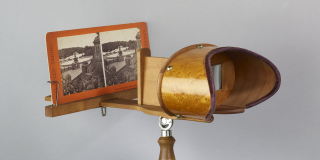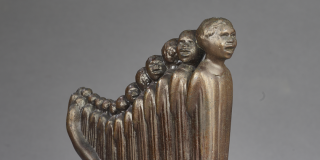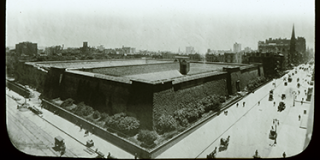
Lantern slide of Croton Reservoir, in process of demolition
Glass lantern slide, 1900
New York Public Library Archives
Lantern slide of Croton Reservoir, in process of demolition
Early New Yorkers obtained water from natural bodies of water, and from wells that collected rainwater that coursed through increasingly filthy streets. As the population grew, so did industry, the construction of wooden buildings prone to fire, and epidemics such as cholera and typhoid—all of which pointed to a desperate need for a plentiful source of clean, fresh water. New York’s aqueduct system, a remarkable feat of engineering completed in 1842, carried water from the original Croton River dam in Westchester County through 41 miles of mainly brick-lined masonry tunnel, first to the receiving reservoir (under today’s Great Lawn in Central Park) and then on to the distributing reservoir—a fortress-like structure previously on the site of this very building. Portions of the reservoir were incorporated into the Library’s foundation and can still be seen today.
: New York Public Library Archives, Manuscripts and Archives Division
Currently on View at Stephen A. Schwarzman Building
The copyright and related rights status of this item has been reviewed by The New York Public Library, but we were unable to make a conclusive determination as to the copyright status of the item. You are free to use this Item in any way that is permitted by the copyright and related rights legislation that applies to your use.






